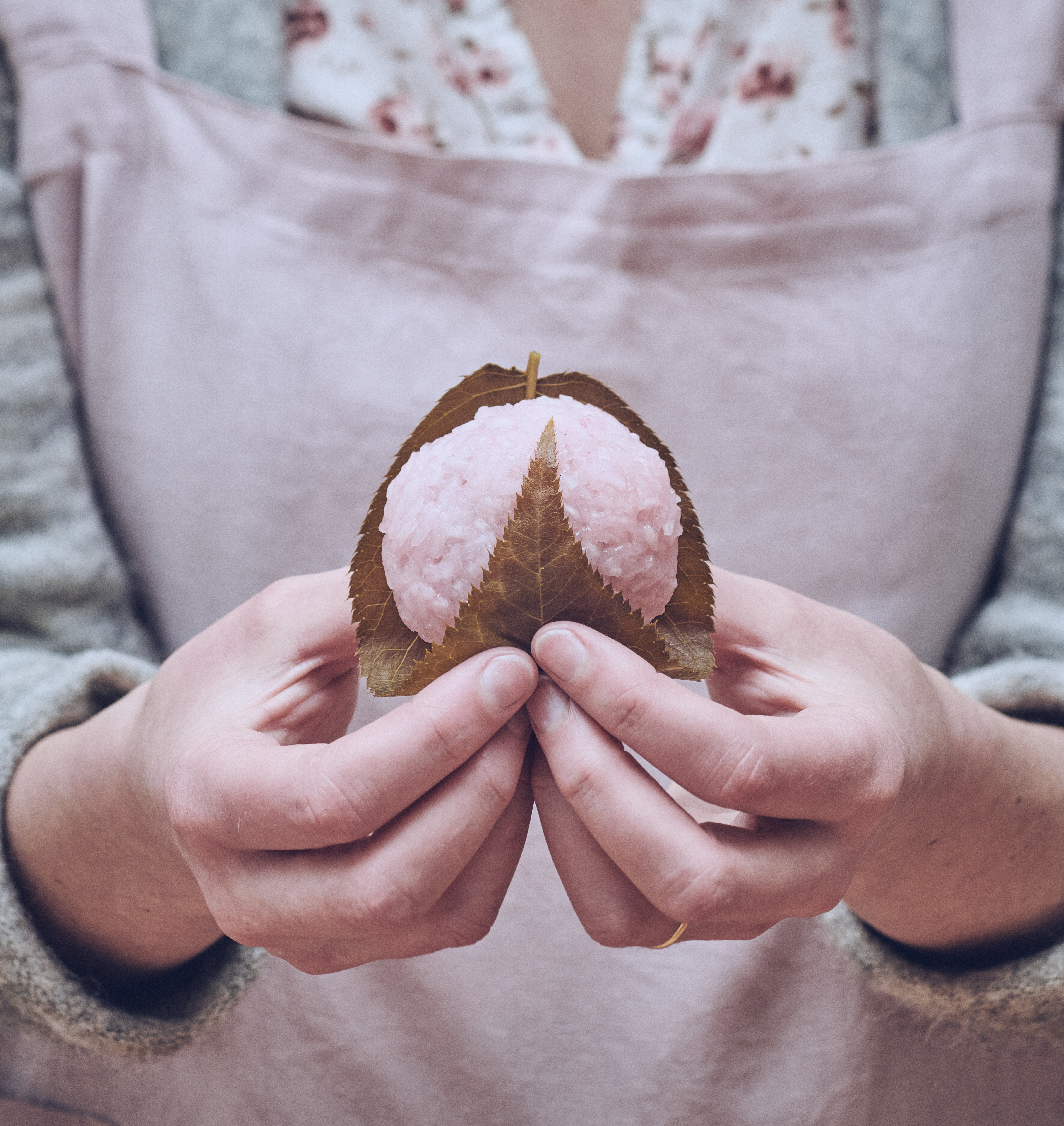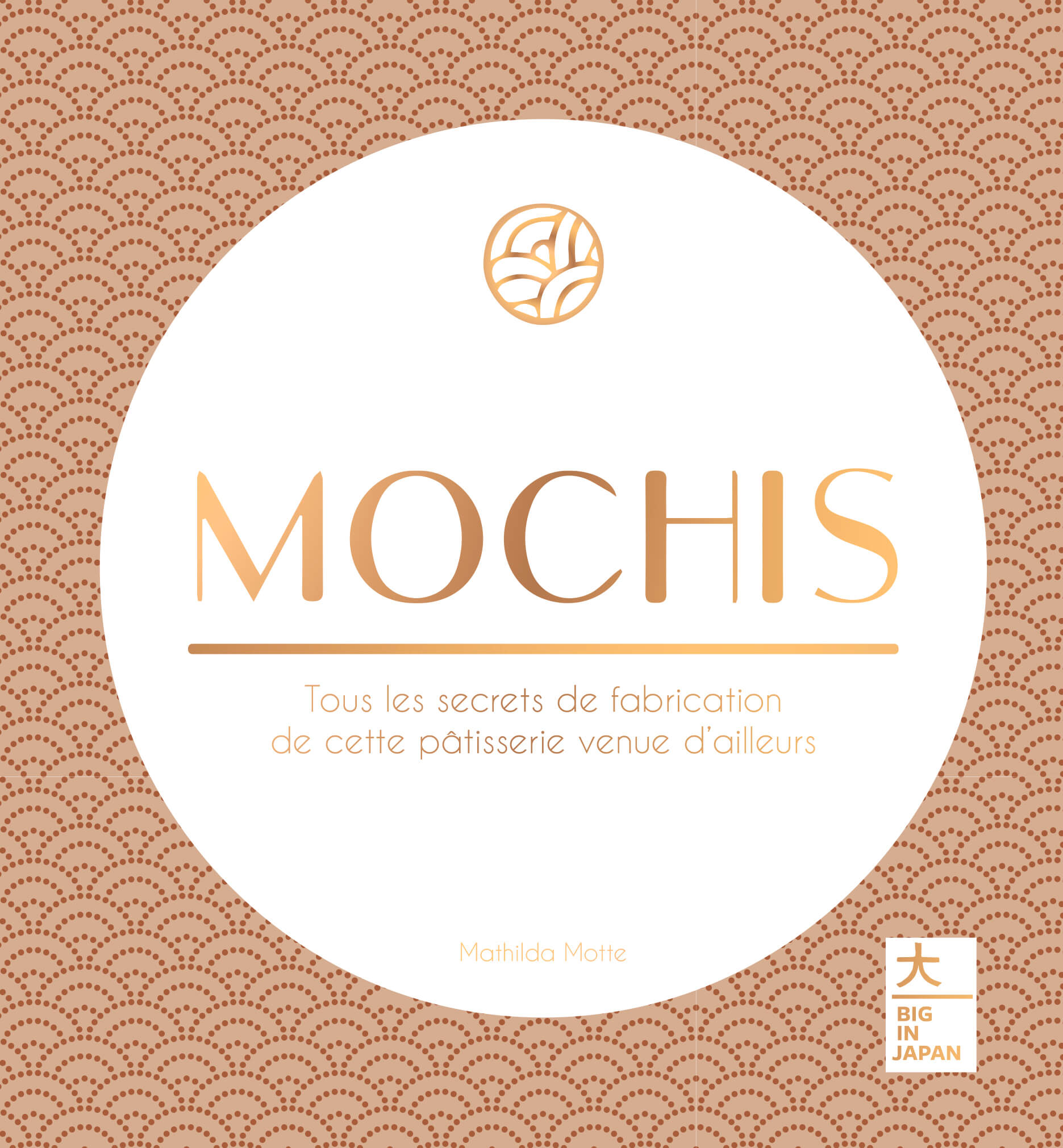Recipe for ‘Sakura Mochi’ by Mathilda Motte
This traditional dessert is enjoyed at the start of spring and particularly to celebrate Girls' Day in early March.

From ‘Mochis’ by Mathilda Motte, Photographs by Nicolas Lobbestaël, for Editions Big In Japan.
With their pink hue, sakura mochi instantly evoke the colour of cherry blossom, and indeed this is the origin of their name, as sakura is the term for cherry trees and their flowers in Japan. Mathilda Motte, founder of La Maison du Mochi, shares the recipe to make them in her book Mochis. In it, she groups the recipes according to the seasons.
These sakura mochi are therefore to be enjoyed when spring comes, when the Japanese flock to admire the trees in bloom, the famous hanami. They are also the typical dish eaten during hina matsuri, Girls’ Day, which is celebrated in the country on 3 March.
In addition to their pink colour, sakura mochi are adorned with an edible pickled cherry blossom leaf, with a slightly salty flavour. The way they are made differs by region. In eastern Japan and in Tokyo, they are made from rice flour, and the mochi is presented open. In western Japan, in the Kansai region and particularly in Kyoto, sticky rice flour is used and the mochi is closed like a daifuku, the traditional form of mochi.
In the introduction to the recipe, Mathilda Motte explains that pickled cherry blossom leaves are easy to find in specialist Japanese supermarkets.
Makes 6 sakura mochi
Ingredients
200 g sticky rice
50 g sugar
300 g water
Pink food colouring
6 pickled cherry blossom leaves
150 g anko
Method
Wash the rice in a large bowl of water, emptying out the water several times. Drain the rice and mix with the sugar, water and pink colouring. Cook: programme the rice cooker to the classic rice cooking cycle. If cooking in a saucepan, cover and place over a high heat. Set a timer for 20 minutes and reduce to a medium heat as soon as a small amount of steam escapes. Once cooked, leave to sit for 10 minutes, keeping the lid on.
While the rice is cooking, soak the cherry blossom leaves in water, then dry them using a tea towel. Make 6 balls of anko weighing 25 g each.
Once the rice has finished resting, mix and pound roughly.
With damp hands, take 70 g of the pounded rice and form a disc.
Place a ball of anko in the centre of your palm and close it up, wetting your hands when necessary.
Place the rice ball on the base of the leaf, on the side where the vein is protruding. Fold the leaf over the ball. Repeat the process for the rest of the ingredients.
Enjoy the mochi the same day or store in a closed container at room temperature.
Mochis (2021), a recipe book by Mathilda Motte published by Big in Japan (not currently available in English).
Mathilda Motte discovered mochi when she went to live in Japan in 2011. On her return to France, she started making gluten-free and 100% vegetarian versions of these traditional desserts. In 2016, she founded La Maison du Mochi which is composed of an online shop and mochi making workshops which are held at her home in Touraine. Mochis is her second recipe book dedicated to these sweet treats. In 2015, she released Mochis Mochis, a book containing around fifty recipes.

‘Mochis’ by Mathilda Motte, Photographs by Nicolas Lobbestaël, for Editions Big In Japan
TRENDING
-
The Tattoos that Marked the Criminals of the Edo Period
Traditional tattoos were strong signifiers; murderers had head tattoos, while theft might result in an arm tattoo.

-
Chiharu Shiota, Red Threads of the Soul
Last year, more than 660,000 people visited the retrospective 'Chiharu Shiota: The Soul Trembles' exhibit at the Mori Art Museum.

-
‘Before Doubting Others, Doubt Yourself. Who Can Truly Say a Dish Isn’t What It Used to Be?’
In ‘A Non-Conformist’s Guide to Surviving Society’, author Satoshi Ogawa shares his strategies for navigating everyday life.

-
The Story of Sada Yacco, the Geisha who Bewitched Europe
Described by Dazed magazine as the first beauty influencer, she has been restored to her former glory since 2019.

-
Ito Jakuchu's Naturalist Paintings
From 15 September until 14 October 2018, the Petit Palais showcased the artist's iconic ‘Images of the Colourful Realm of Living Beings’.





